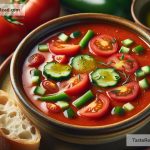Exploring the Origins of the Afghan Kebab
Kebabs are known worldwide as delicious, skewer-grilled pieces of meat, but not everyone is familiar with the remarkable story and rich origins of the Afghan kebab. This delightful dish has a long history, dating back centuries, and is deeply embedded in Afghan culture. So, let’s go on a tasty journey to explore the origins of the Afghan kebab.
A Dish Born from Necessity
The story of the Afghan kebab begins on the ancient trading routes of Central Asia. Imagine the harsh, rugged terrains and vast deserts that traders and nomads had to traverse. These journeys were long and demanding, with travelers often moving for weeks. They needed food that was not only nourishing and energy-rich but also easy to prepare and transport. Enter the kebab: simple to make, easy to carry, and requiring minimal ingredients. The basic premise involved skewering chunks of meat and cooking them over an open flame. This method proved to be efficient and practical for the nomadic lifestyle.
The Cultural Communion
Afghanistan’s geographical position as a gateway between the East and West meant that it was a melting pot of cultures and cuisines. The Afghan kebab, as we know it today, was likely influenced by Persia (modern-day Iran) on the west and the Indian subcontinent to the east. Over time, the recipe was perfected, incorporating spices and preparation techniques from various cultures. This blend of influences led to a unique flavor profile that is distinct to Afghan kebabs: a fusion of spices, tenderness, and a smoky aroma that invites communal gatherings and celebrations.
Variations and the Magic of Marinades
One of the secrets behind the succulence of Afghan kebabs lies in the marinades. Each family or region might have its secret mix, but common ingredients include a variety of spices like coriander, cumin, turmeric, and sometimes a hint of saffron. Yogurt is another key ingredient, acting as a tenderizer to ensure the meat is soft and juicy. The type of meat varies too, with lamb and chicken being the most popular choices, but beef and goat are also used.
Among the variations, two popular types stand out: the “Shami” kebab, known for its minced meat, and the “Tikka” kebab, made from larger chunks of meat. Each has its distinct taste and preparation method, but both share the characteristic smokiness and depth of flavor that Afghan kebabs are celebrated for.
More Than Just a Meal
In Afghan culture, food is more than sustenance; it’s a medium of social interaction and hospitality. Preparing and sharing a meal, especially kebabs, is an act of communal joy and celebration. The kebab has a unifying effect, bringing people together over shared platters, breaking down barriers and fostering connections. This tradition of communal dining reflects the Afghan ethos of hospitality, where sharing a meal is the highest form of respect and friendship.
The Legacy Lives On
Today, Afghan kebabs have traversed boundaries and won hearts across the globe. From street vendors in Kabul to high-end restaurants in New York, the Afghan kebab represents a piece of Afghan culture on a plate. Its popularity is a testament to the rich culinary heritage and the timeless appeal of simple, flavorful cooking.
The Afghan kebab is also a symbol of resilience and tradition. Despite years of conflict and change, the love for kebabs has remained unchanged, passed down through generations. Every skewer tells a story of journeys through ancient lands, of cultures mingling, and of the enduring spirit of a people.
Conclusion
The Afghan kebab is much more than just skewered meat; it’s a culinary treasure steeped in history and tradition, reflecting the rich tapestry of Afghan culture. Its origins, laden with tales of ancient travelers and cultural exchange, remind us of the universal language of food. So, next time you savor the smoky, spiced flavors of an Afghan kebab, remember the journey it has been on — a journey through time, across landscapes, bringing people together, one skewer at a time.


